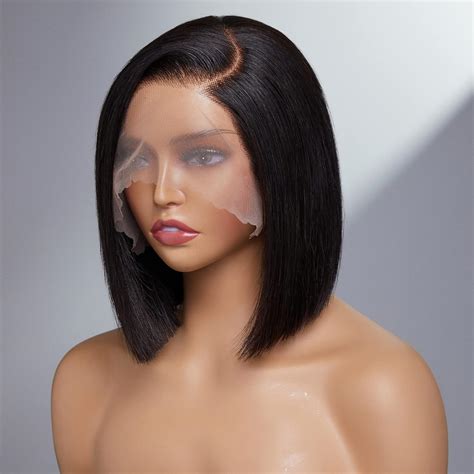Hair Pieces & Wigs: Market Trends and Statistics
The global hair pieces and wigs market is a rapidly growing industry, valued at approximately USD $5.3 billion in 2021 and projected to reach USD $10.8 billion by 2028, exhibiting a CAGR of 9.4% during the forecast period. The increasing demand for hair replacement solutions due to hair loss, fashion trends, and celebrity endorsements are key drivers of market growth.

Hair Pieces & Wigs: Applications and Benefits
Hair pieces and wigs offer numerous applications and benefits, including:
- Hair Loss Concealment: Hair loss is a common concern affecting millions of people, and hair pieces and wigs provide discreet and effective solutions to conceal thinning hair, bald spots, or areas of reduced hair growth.
- Styling Versatility: Hair pieces and wigs allow individuals to experiment with different hair styles, colors, and textures without committing to permanent changes. They can provide instant volume, length, or color without the need for dyes, bleach, or chemical treatments.
- Convenience: Hair pieces and wigs are easy to apply and remove, making them ideal for temporary transformations or quick styling changes. They are great for special occasions, photo shoots, or when time is a constraint.
Pain Points and Motivations in the Hair Pieces & Wigs Industry
Pain Points:
- Cost: High-quality hair pieces and wigs can be expensive, which can limit accessibility for some consumers.
- Maintenance: Wigs and hair pieces require regular care and maintenance, including washing, styling, and storage.
- Comfort: Some wigs and hair pieces can be uncomfortable to wear, especially for extended periods.
Motivations:
- Improved Appearance: Hair pieces and wigs can significantly improve self-esteem and confidence by enhancing one’s appearance and covering up areas of hair loss.
- Fashion and Style: Hair pieces and wigs offer a unique way to express personal style and create a desired look.
- Medical Conditions: For individuals with certain medical conditions, hair loss can be a side effect of treatments, and hair pieces or wigs can help them regain a sense of normalcy.
Effective Strategies for Success in the Hair Pieces & Wigs Industry
- Focus on Quality: Offer high-quality hair pieces and wigs made from ethically sourced materials.
- Provide Excellent Customer Service: Ensure a seamless customer experience by offering personalized consultations, timely deliveries, and responsive support.
- Stay Updated with Trends: Keep up with the latest hair fashion trends and incorporate them into your product offerings.
- Embrace Innovation: Explore new materials, technologies, and design concepts to create innovative and differentiated hair pieces and wigs.
- Leverage Digital Marketing: Utilize social media, influencers, and online platforms to raise awareness and drive sales.
4 Useful Tables for Hair Pieces & Wigs
Table 1: Types of Hair Pieces
| Type | Description |
|---|---|
| Clip-in Hair Extensions | Synthetic or human hair extensions that clip into existing hair for temporary length and volume. |
| Hair Toppers | Partial hair pieces that conceal thinning hair or bald spots on the crown or top of the head. |
| Bangs | Hair pieces designed to create a fringe or bangs without cutting natural hair. |
| Ponytails | Hair pieces that attach to the back of the head to add instant length and volume to a ponytail. |
Table 2: Materials Used in Wigs
| Material | Characteristics |
|---|---|
| Synthetic Hair | Affordable, comes in a wide range of colors and styles. Can be heat-resistant or non-heat-resistant. |
| Human Hair | Natural-looking, can be styled and colored like natural hair. More expensive than synthetic hair. |
| Remy Hair | High-quality human hair that retains its natural cuticle layer, resulting in reduced tangling and a longer lifespan. |
Table 3: Factors to Consider When Choosing a Wig
| Factor | Considerations |
|---|---|
| Cap Size | Measure your head circumference to determine the correct cap size for a comfortable fit. |
| Hair Density | Choose hair density based on your desired fullness and thickness. |
| Hair Length | Determine the desired length of the wig to complement your face shape and hairstyle preferences. |
| Hair Texture | Select a hair texture that matches or complements your natural hair, such as straight, wavy, or curly. |
Table 4: Care and Maintenance Tips for Wigs
| Task | Frequency |
|---|---|
| Washing | Every 6-8 wears |
| Styling | Use heat protectant spray before styling with hot tools |
| Conditioning | Apply deep conditioning treatments every 2-3 washes |
| Storage | Store wigs on a wig stand or in a breathable bag when not in use |
FAQs on Hair Pieces & Wigs
1. How often should I wash my wig?
– Every 6-8 wears.
2. Can I use heat styling tools on my wig?
– Yes, if the wig is made of heat-resistant synthetic hair or human hair. Apply heat protectant spray first.
3. How long do hair pieces and wigs typically last?
– Synthetic wigs: 6-12 months with proper care. Human hair wigs: 1-2 years or longer.
4. Can I color or bleach a wig?
– Human hair wigs can be colored or bleached. Synthetic hair wigs generally cannot be colored or bleached.
5. How do I know what wig size to choose?
– Measure your head circumference and refer to the cap size chart provided by the wig manufacturer.
6. Can hair pieces and wigs cause hair loss?
– No, properly fitted and maintained hair pieces and wigs do not cause hair loss.
Conclusion
Hair pieces and wigs offer numerous benefits, from concealing hair loss to enhancing personal style. Understanding the market trends, pain points, motivations, and effective strategies in the industry is crucial for success in this growing sector. By embracing innovation, focusing on quality, and providing excellent customer service, businesses can meet the evolving needs of consumers and drive growth in the hair pieces and wigs market.
